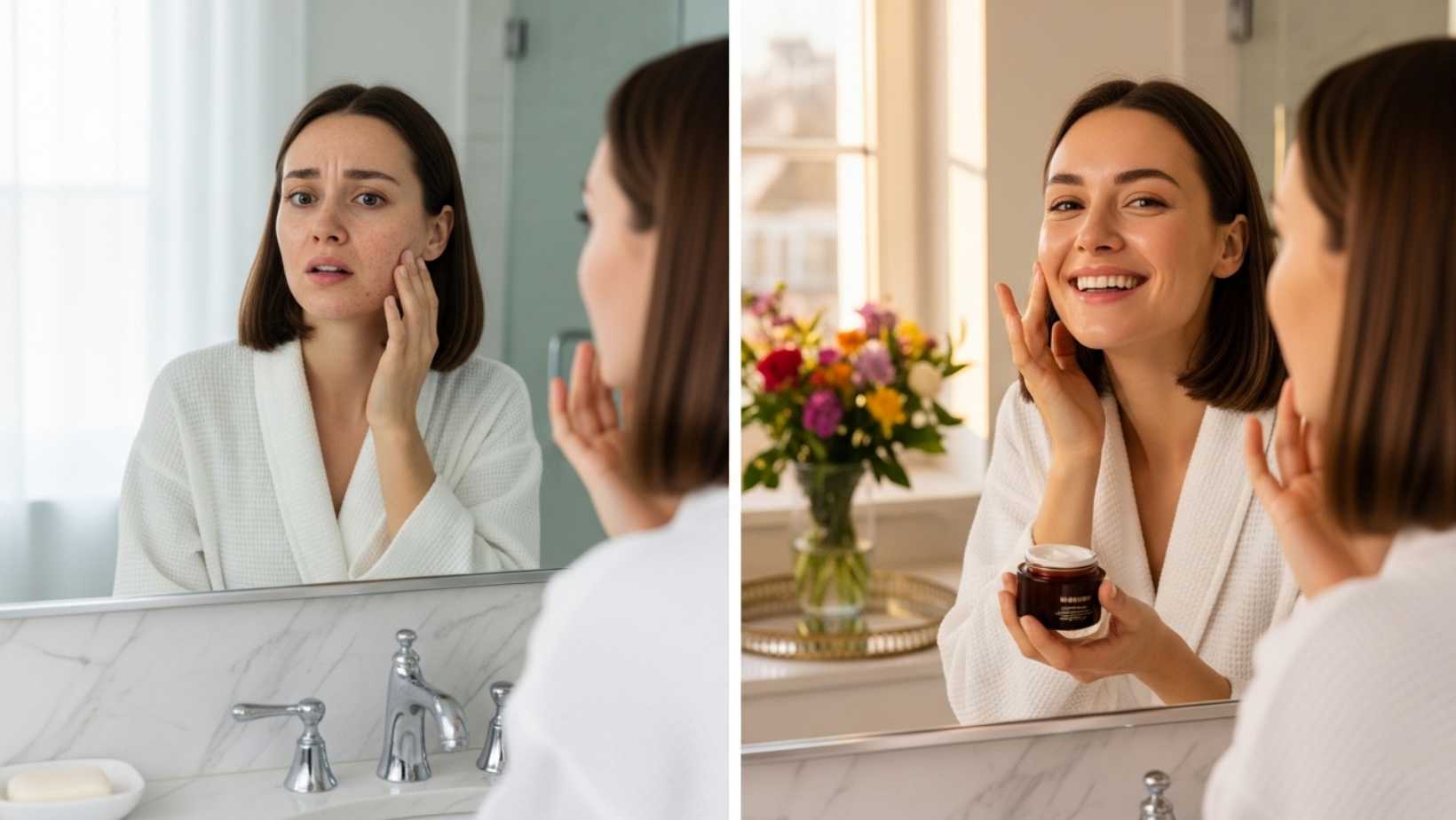I’ll never forget the morning I looked in the mirror and saw tiny white flakes dusting my cheekbones like unwanted snow. My foundation clung to patches of dry skin, emphasizing every flaky bit I’d tried to cover. At 30, I thought I had my skincare routine figured out, but clearly my skin had other plans once the colder weather hit.
The worst part wasn’t just how it looked, it was how my skin actually felt. Tight, uncomfortable, almost itchy in places. I’d been using the same lightweight gel moisturizer all year, never realizing that what worked beautifully during warmer months was leaving my skin desperately thirsty when temperatures dropped.
The wake-up call that changed everything
My breaking point came during a video call with a client. I caught a glimpse of myself on screen and noticed the flakes were visible even through the camera. That’s when I knew something had to change, and fast.
I started researching like crazy, reading everything about skin barrier repair and moisture retention. Turns out, my skin wasn’t actually producing less oil in winter, it was losing moisture faster due to indoor heating and cold outdoor air. The solution wasn’t just about adding more product, it was about switching to richer formulations that could actually seal in hydration.
Building my winter survival routine
Step one became my gentle cleanser switch. I ditched my foaming face wash for a cream-based cleanser that didn’t strip my skin. The difference was immediate, my face no longer felt tight after washing.
Step two involved layering a hydrating serum under my moisturizer. I chose one with hyaluronic acid because it holds up to 1000 times its weight in water. Similar to the ceramide formulas dermatologists recommend, this ingredient became my secret weapon against dryness.
Step three was the real game-changer: switching to a thick night cream. I’m talking about the kind that feels almost too rich at first but sinks in beautifully overnight. My morning skin transformed from desert-dry to plump and glowing.
The SPF lesson I learned the hard way
Here’s something embarrassing to admit: I stopped wearing sunscreen consistently during winter because I figured less sun meant less need for protection. Wrong. So wrong.
After about three weeks of my new routine, I noticed improvement everywhere except around my eyes and forehead. My dermatologist gently reminded me that UV rays penetrate clouds and windows, and winter sun reflecting off snow can be even more intense. I added a moisturizing SPF 30 back into my morning routine, and within days, those stubborn dry patches finally healed.
The transformation took about six weeks total. No more flaking foundation, no more tight uncomfortable feeling, just healthy, hydrated skin that glowed even under harsh office lighting. I learned that skincare routines need to evolve with the seasons, just like our wardrobes. What works beautifully in humidity might fail miserably in dry winter air.
Now I actually look forward to my nighttime routine. There’s something comforting about massaging that rich cream into my face, knowing I’m giving my skin exactly what it needs. My makeup applies smoothly again, and I’ve stopped avoiding close-up photos. Small victories, but they mean everything when you’ve been dealing with flaky, uncomfortable skin for months.
